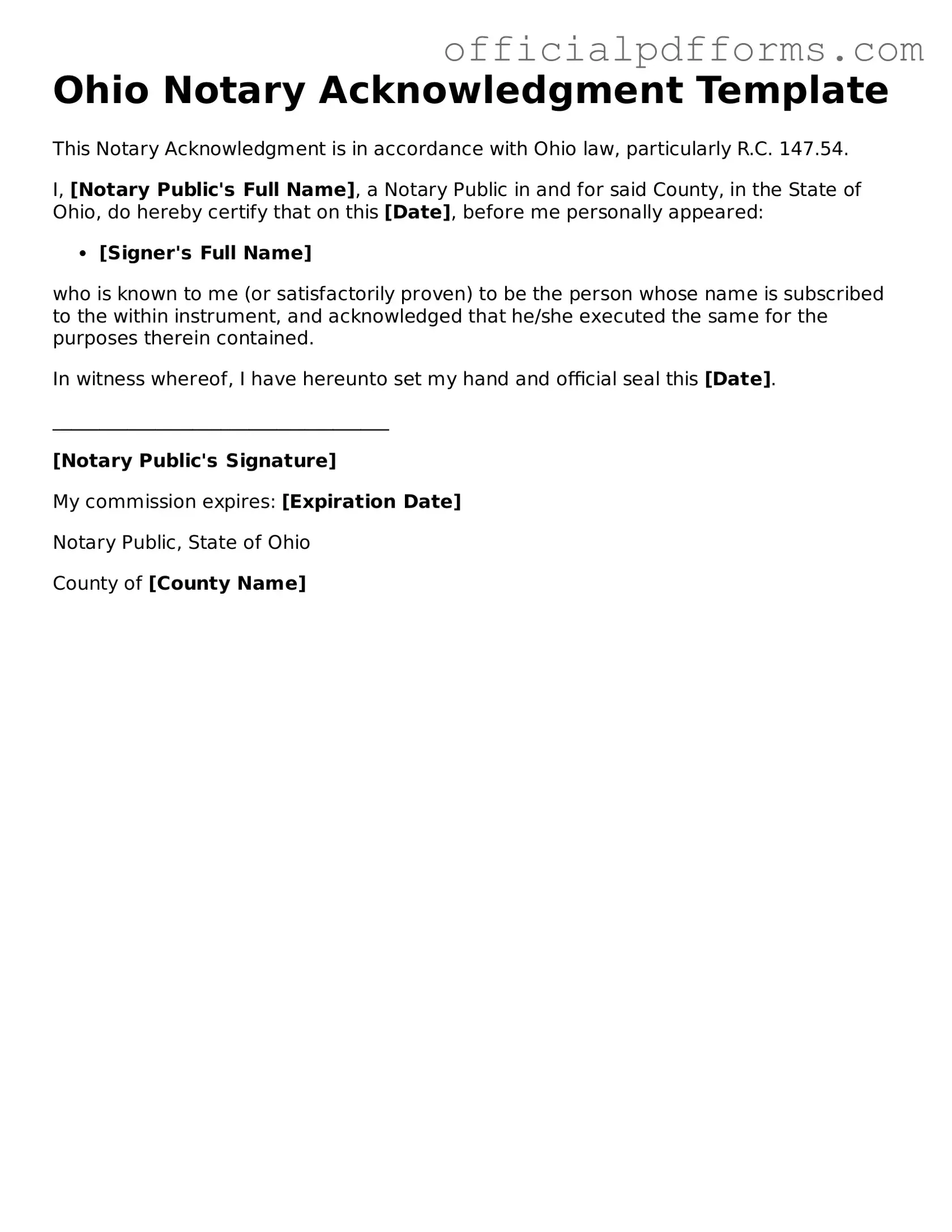The Ohio Notary Acknowledgement form is a legal document that serves as proof that a person has signed a document in the presence of a notary public. This form is typically used to confirm the identity of the signer and to ensure that the signature is genuine. It is often required for various legal documents, including deeds, contracts, and affidavits.
Who can serve as a notary public in Ohio?
In Ohio, a notary public must meet specific eligibility criteria. To become a notary, an individual must be at least 18 years old, a resident of Ohio or have a place of business in the state, and must not have been convicted of a disqualifying offense. After meeting these requirements, the individual must complete a training course and pass an examination before applying for a notary commission.
To complete the Ohio Notary Acknowledgement form, follow these steps:
-
Identify the document that requires notarization.
-
Ensure that the signer appears in person before the notary.
-
Have the signer provide valid identification.
-
Fill out the form with the necessary details, including the signer's name, the date, and the notary's information.
-
Both the signer and the notary must sign the form.
Is there a fee for notarization in Ohio?
Yes, Ohio law allows notaries to charge a fee for their services. The maximum fee that a notary can charge is set by the state and may vary depending on the type of service provided. It is advisable for individuals seeking notarization to inquire about fees in advance.
How long is an Ohio notary commission valid?
An Ohio notary commission is valid for a period of five years. After this period, the notary must renew their commission by completing the necessary application process, which may include retaking the examination and completing any required training.
If a notary makes an error on the Acknowledgement form, it is important to correct it promptly. The notary should either cross out the mistake and write the correct information or, in some cases, complete a new form. It is essential to ensure that all information is accurate to avoid potential legal issues.
The Ohio Notary Acknowledgement form is primarily intended for use within the state of Ohio. However, it may be accepted for documents executed outside of Ohio if the notarization complies with the laws of the state where the document is being executed. It is advisable to consult legal counsel or a notary in the relevant jurisdiction to confirm acceptance.
